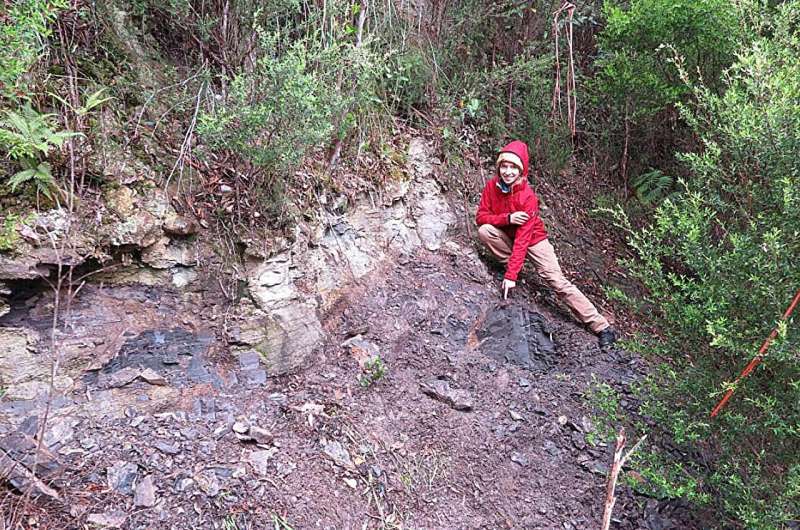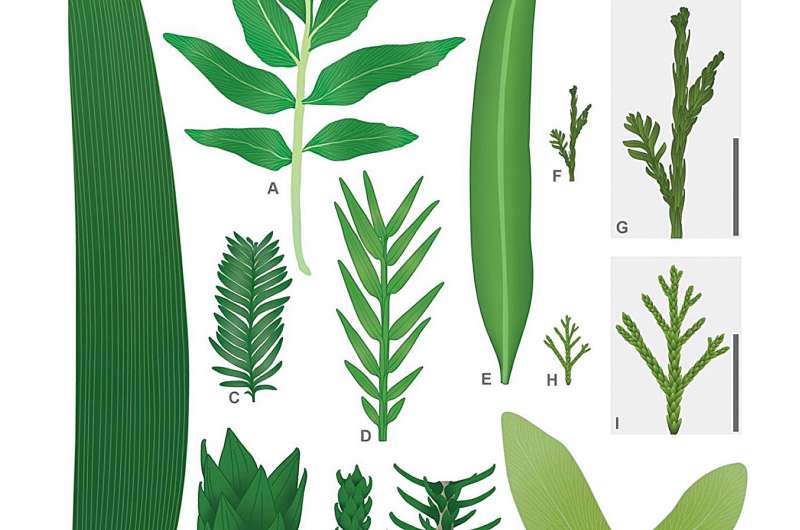This article has been reviewed according to Science X's editorial process and policies. Editors have highlighted the following attributes while ensuring the content's credibility:
fact-checked
peer-reviewed publication
trusted source
proofread
Tropical plants discovered in Tasmania's ancient Polar Forest

New remains of a 53-million-year-old polar forest have been unearthed near Macquarie Harbor in western Tasmania, unveiling previously unknown ancestral origins of rainforest plants in the southern polar region.
The finding, made by recent University of Adelaide Ph.D. graduate, Dr. Miriam Slodownik, sheds light on the extent and evolution of southern rainforests during the early Eocene epoch—the last period of extreme greenhouse conditions on Earth.
"This discovery offers rare insights into a time when global temperatures were much higher than today," said Dr. Slodownik.
"Tasmania was much closer to the South Pole, but the warm global climate allowed lush forests to thrive in these regions."
The discovery was made near Strahan, Western Tasmania, and uncovered an array of plant life, including two newly identified conifer species: Podocarpus paralungatikensis and Araucaria timkarikensis.
A variety of fern and tree species were also discovered, many of which are ancestors of the flora now found in regions such as Australia, New Zealand, Indonesia, and South America.
"The most spectacular fossils are relatives of the Kauri, Bunja and Wollemi pines that give clues about the evolution of these iconic Australian trees," said Dr. Slodownik, whose research was published in the American Journal of Botany .

More than 400 new fossils have been excavated and prepared in the Paleobotany Laboratory at the University of Adelaide.
Using advanced techniques such as ultraviolet photography and microscopic analyses, the researchers have revealed intricate details of leaf and cellular structures. These insights have been pivotal in understanding the relationship of these ancient plants to their modern counterparts.
In collaboration with the Tasmanian Aboriginal Center, the new fossil species were named in palawa kani, the Aboriginal language of Tasmania, in recognition of the land's original owners and longtime occupants. Paralungatik is the original name of Macquarie Harbor and Timkarik is the name of the Strahan area.
"These fossils highlight the historical connections between Antarctica, South America, and Australia, which were once part of the ancient supercontinent Gondwana," said Dr. Slodownik.
"The analyses showed how these plants adapted and thrived across the Southern Hemisphere in warm, ice-free conditions, even with the extreme seasonal changes near the polar circle."
As the Earth cooled and the polar regions became covered in glaciers, the landmass that is now Australia drifted northward. It carried these polar plants towards the equator where they evolved into the species that populate modern-day Australia and neighboring landmasses.
"This study revealed the amazing diversity of Tasmania's fossilized forest. These plants tell the story of big changes in climate and the shifting tectonic plates over millions of years," Dr. Slodownik said.
"Through this research, my team and I have continued the University of Adelaide's history of being at the forefront of paleobotanical research, contributing crucial insights into plant evolution and the dynamics of our planet in deep time."
More information: Miriam A. Slodownik, The non‐flowering plants of a near‐polar forest in East Gondwana, Tasmania, Australia, during the Early Eocene Climatic Optimum, American Journal of Botany (2024). DOI: 10.1002/ajb2.16398
Journal information: American Journal of Botany
Provided by University of Adelaide


















